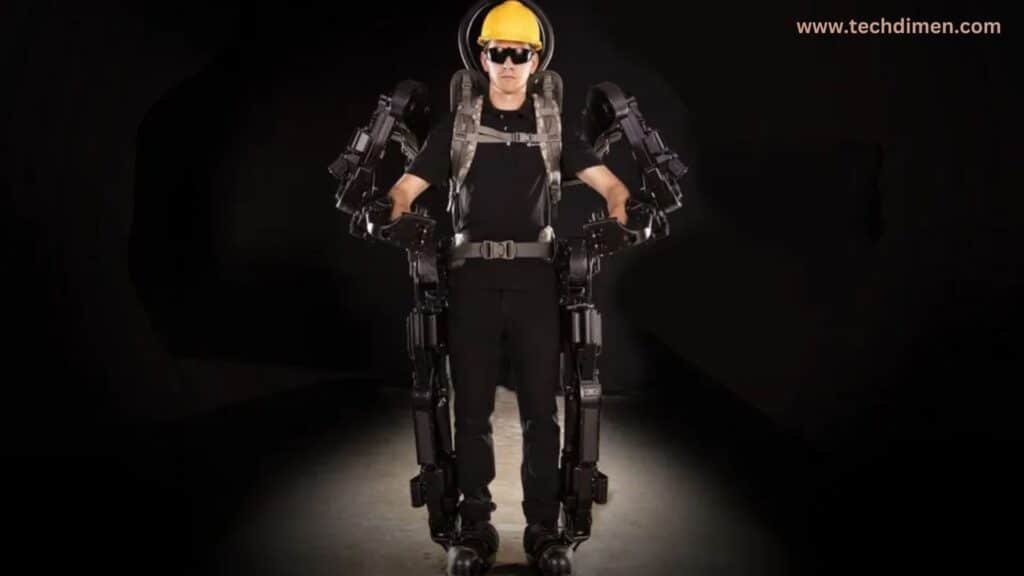The Future of Orthopaedic Technology is no longer just about metal implants and plaster casts. It is a rapidly evolving field driven by digital innovation, smart materials, artificial intelligence, and robotics. These developments are transforming not only how we treat injuries and conditions related to bones and joints but also how we restore mobility and enhance lives.
What Is Orthopaedic Technology?
The Future of Orthopaedic Technology refers to the tools, devices, materials, and systems used to diagnose, treat, and rehabilitate musculoskeletal conditions. This includes everything from orthopedic devices like braces and splints to advanced solutions such as robotic joint replacements and AI powered diagnostics. Traditionally, orthopaedic treatment relied heavily on surgical techniques and standardized implants. However, technology has pushed the field toward personalized, data driven, and less invasive solutions.
The Future of Orthopaedic Technology has evolved significantly. Decades ago, a joint replacement often involved a one size fits all approach and lengthy hospital stays. Today, procedures are tailored to the patient anatomy and lifestyle using imaging data, wearable sensors, and predictive analytics. The journey from rigid designs to intelligent systems marks a monumental shift in both patient outcomes and surgeon efficiency.
Trending Innovations in Orthopaedic Devices

Smart orthopedic implants are among the most revolutionary trends . These implants, often embedded with sensors and connected via healthcare IoT devices, provide the time data on joint movement, stress, and temperature. For instance, sensor integrated knee implants can alert doctors to early signs of infection or implant wear.
The integration of 3D printing in custom orthopaedic solutions allows for highly accurate and patient specific prosthetics, orthoses, and bone scaffolds. This technology not only reduces production time and cost but also improves fit and function, enhancing overall patient satisfaction.
AI in orthopaedic surgery has made its way from labs to operating rooms. AI algorithms now assist with surgical planning and navigation by analyzing CT and MRI scans, identifying anatomical landmarks, and even predicting post surgical outcomes. This not only reduces the likelihood of human error but also improves precision during procedures.
Robotics and Exoskeletons A New Era of Movement

Wearable exoskeletons are no longer a sci fantasy. These powered suits support patients during post surgical recovery by stabilizing limbs, improving mobility, and accelerating rehabilitation. They are especially helpful for those recovering from spinal cord injuries or strokes.
Robotic assisted joint replacement surgery has become standard in many leading hospitals. Robotic systems offer unparalleled precision when placing implants, minimizing tissue damage and improving alignment. Patients benefit from faster recovery times, reduced pain, and better long term outcomes.
Human machine collaboration in physical therapy involves rehabilitation robotics machines that guide patients through therapeutic movements. Combined with machine learning algorithms, these robots adapt to each user pace and progress, offering personalized therapy that evolves in time.
Materials That Move With You
Biocompatible metals and polymers play a crucial role in advanced orthopaedic solutions. Materials such as titanium alloys, PEEK , and bioresorbable composites offer strength, flexibility, and compatibility with human tissue, reducing rejection risks and improving healing.
Smart biomaterials take things further. These substances can change shape or stiffness in response to body heat, pH levels, or electrical signals. For example, a smart spinal implant might expand once inserted, adapting to the patient’s unique spinal curvature.
Sustainability is also gaining traction. Eco friendly components in modern implants are being explored to reduce the environmental impact of surgical waste. This includes biodegradable screws and recyclable packaging for orthopaedic kits.
| Category | Emerging Trend | Description |
| Smart Implants | IoT Enabled Devices | Data tracking for recovery and performance |
| 3D Printing | Personalized Prosthetics | Custom fit limbs and bone scaffolds tailored to each patient |
| Robotics in Surgery | Robotic Assisted Joint Replacement | High precision surgeries with faster recovery times |
| AI & Machine Learning | Predictive Diagnostics | Early detection and treatment planning based on data patterns |
| Wearable Technology | Exoskeletons & Rehab Suits | Enhancing mobility and supporting post operative rehabilitation |
| Advanced Materials | Biocompatible & Smart Materials | Implants that adapt to body temperature, pressure, or movement |
| Remote Care Integration | Tele-Orthopaedics | Virtual consultations and remote physical therapy sessions |
| Sustainability in Design | Eco Friendly Orthopaedic Devices | Use of recyclable, non toxic, and durable materials in production |
Digital Health Integration in Orthopaedics
Mobile apps for post-operative monitoring now allow patients to track recovery metrics, log pain levels, and communicate with their care team. These tools not only improve patient engagement but also enable early intervention when complications arise.
Tele rehabilitation and remote patient care became widespread during the pandemic, and they have remained integral. Patients can now perform guided exercises at home under the virtual supervision of a physical therapist, using video calls and motion tracking tools.
Cloud based patient data and predictive analytics allow providers to forecast patient outcomes, adjust treatment plans, and identify risks before they escalate. For example, an AI system might detect subtle gait changes and predict future joint deterioration, allowing for proactive intervention.
Startups and Tech Giants Driving the Orthopaedic Revolution

The Future of Orthopaedic Technology startups and healthcare giants are pushing boundaries. Companies like Stryker and Zimmer Biomet have released AI integrated robotic surgical systems, while startups such as LIMBER and Open Bionics are developing affordable 3D printed prosthetics.
Disruptive companies are introducing digital twin simulations for surgery virtual replicas of a patient’s anatomy that surgeons can rehearse on before the actual procedure. Others are working on neural controlled prosthetics that respond to brain signals, offering unprecedented levels of control.
Investment trends show a clear shift. Venture capital is flowing into biomechanics, assistive mobility technology, and wearable rehabilitation systems. Analysts project the orthopaedic technology market will surpass $72 billion by 2030, driven by innovations in sensor technology, cloud computing, and personalized care.
Global Impact and Accessibility
The global impact of orthopaedic technology goes beyond urban hospitals. Innovative solutions are reaching underserved regions. Mobile orthopaedic units, powered by solar energy and equipped with portable scanning and 3D printing capabilities, are delivering care in remote areas.
Affordable orthopaedic technology is also gaining momentum. Organizations are creating low cost 3D printed prosthetics and braces using locally available materials. This democratizes access to care for individuals in developing countries who would otherwise go untreated.
In rural orthopaedic care, telemedicine in orthopaedics has been a game changer. Local clinics can now consult with specialists via video, share imaging data, and even receive surgical support remotely.
Challenges and Ethical Considerations
Despite all the excitement, challenges remain. Data privacy in wearable orthopaedic devices is a pressing issue. With devices constantly collecting sensitive health data, robust cybersecurity measures are essential to protect patients.
There is also a tension between accessibility and profit. High tech solutions often come with high price tags. As orthopaedic tech advances, stakeholders must ensure that innovation doesn’t widen the healthcare gap between rich and poor.
Another ethical concern is AI bias in clinical orthopaedic decision making. If training data lacks diversity, AI systems may produce inaccurate predictions for patients from underrepresented backgrounds. Ensuring inclusivity in data collection is crucial.
What’s Next The Future of Human Mobility
Neural interfaces and thought controlled devices are on the horizon. These systems interpret brain signals to control robotic limbs or exosuits. Early trials have shown promise for paraplegic patients, offering them a chance at regaining mobility.
Predictive orthopaedics is also emerging. By combining AI with genetic profiling, doctors may soon predict a person’s risk of joint degeneration or injury and recommend preventive strategies years before symptoms appear.
Finally, the concept of biohacking human movement is becoming real. Enhanced implants, integrated sensors, and even nanotechnology may someday improve strength, agility, or endurance, not just restore it. What was once considered science fiction is now a matter of ethics, research, and time.
FAQS:The Future of Orthopaedic Technology
What is The Future of Orthopaedic Technology?
Orthopaedic technology refers to tools, devices, and systems used to diagnose, treat, and rehabilitate conditions affecting bones, joints, ligaments, and muscles. This includes implants, surgical robotics, wearables, and digital health tools.
How is AI used in orthopaedics?
AI is transforming orthopaedics by enabling predictive diagnostics, automating surgical planning, analyzing imaging, and customizing treatment plans based on patient data trends.
What are smart implants?
Smart implants are orthopaedic devices embedded with sensors that monitor healing progress, detect complications, and send data to physicians in time for proactive care.
Is 3D printing being used in orthopaedics?
Yes, 3D printing is revolutionizing orthopaedics by allowing the creation of custom prosthetics, implants, and bone scaffolds tailored to individual anatomy, improving fit and function.
What are robotic assisted surgeries in orthopaedics?
Robotic-assisted surgeries use AI guided robotic systems to perform precise movements during joint replacement or spinal procedures, improving accuracy and reducing recovery time.
Can wearable tech help after surgery?
Absolutely. Wearable exoskeletons and rehab suits support joint stability, track movement, and help patients regain mobility faster during physical therapy and post op recovery.
How is telemedicine used in orthopaedic care?
Tele orthopaedics allows virtual consultations, remote monitoring, and digital rehab programs making expert care more accessible, especially in underserved or rural areas.
What materials are used in next gen implants?
Next gen implants use biocompatible, durable, and sometimes bioresponsive materials that adapt to body conditions, reduce rejection risk, and even dissolve when no longer needed.
Are orthopaedic tech devices affordable?
Costs vary. While high-end tech like robotic surgery can be expensive, prices for wearables, smart braces, and 3D printed prosthetics are dropping as innovation scales.
What is next in The Future of Orthopaedic Technology?
The future includes neural-controlled prosthetics, AI driven personalized treatment, augmented reality in surgery, and sustainable, smart implants that self adapt and self report.
Conclusion:The Future of Orthopaedic Technology
Orthopaedic technology represents a blend of engineering marvels, digital transformation, and compassionate healthcare. From smart orthopedic implants and robotic joint replacement systems to wearable exoskeletons and personalized digital care, the field is evolving at breakneck speed. These innovations promise not just better recovery but a better quality of life. As we move forward, the challenge will be ensuring that these benefits are accessible, ethical, and sustainable for all.

Jhon AJS is a tech enthusiast and author at Tech Dimen, where he explores the latest trends in technology and TV dimensions. With a passion for simplifying complex topics, Jhon aims to make tech accessible and engaging for readers of all levels.







